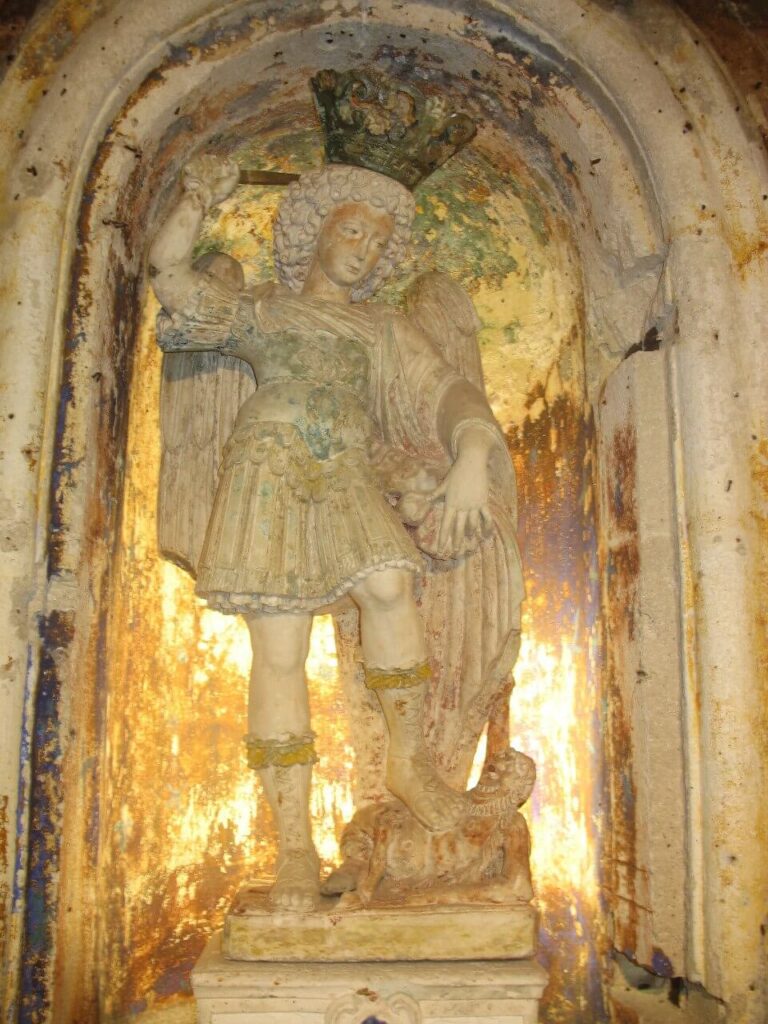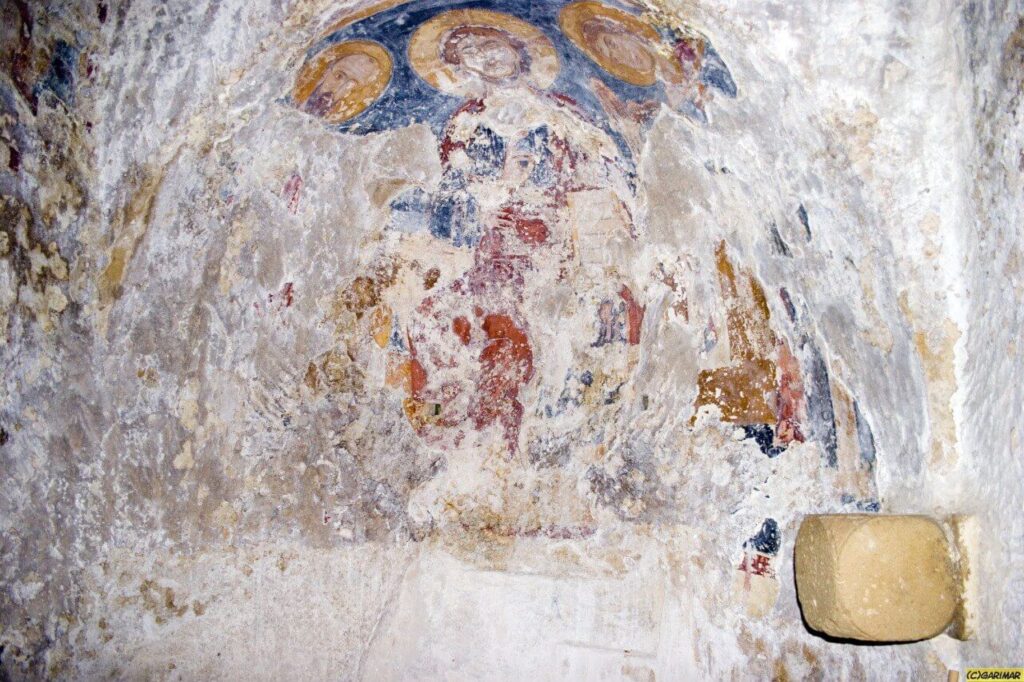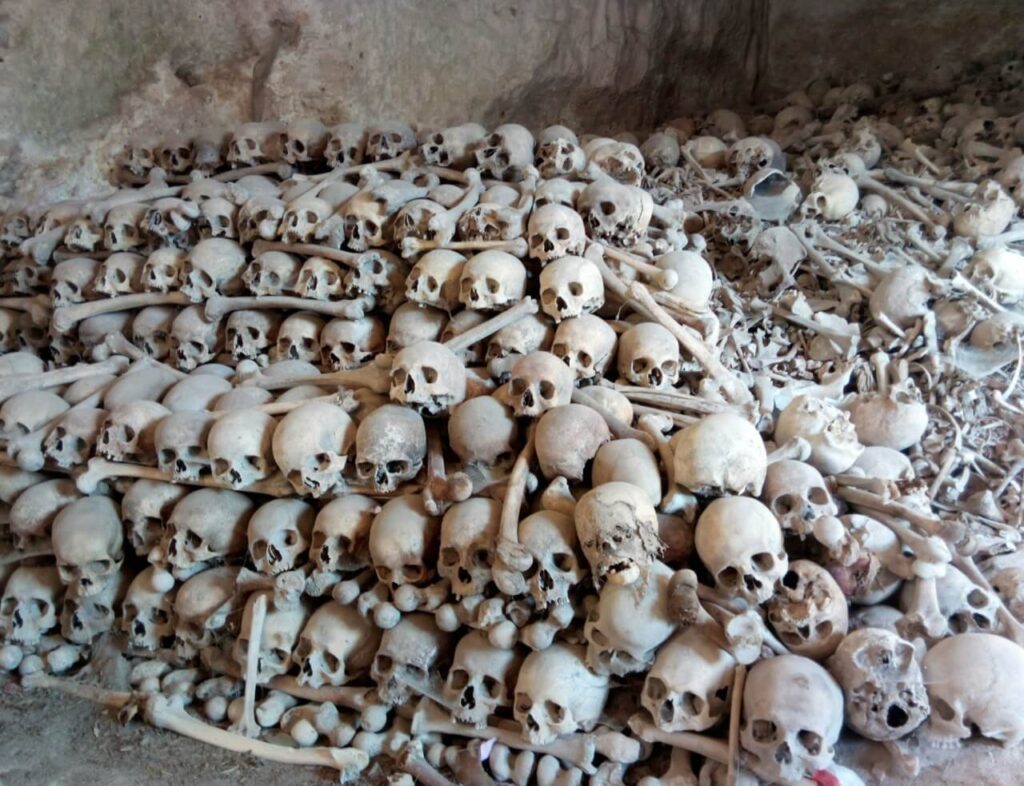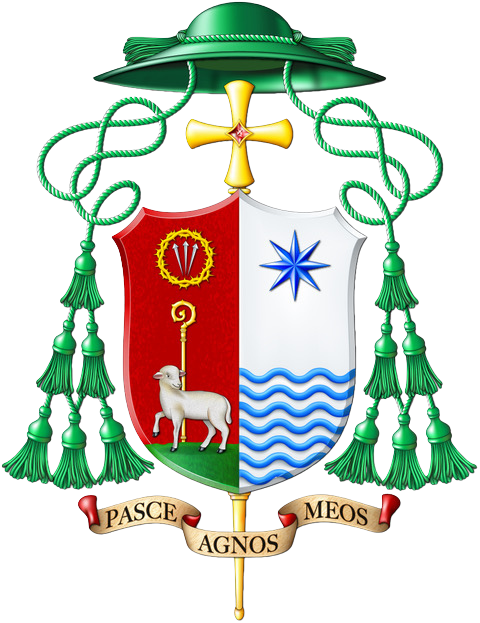Rock complex
of San Michele delle grotte
The cave of S. Michele is a majestic example of the grandeur of a “rock habitat”, one of the largest in Apulia. The complex is located in the Fondovito district on the eastern side of the Canapro or “Gravina” stream, a stream which is characterized by numerous caves dug into the “tufo”, used over the centuries as homes and places of worship.
Throughout the ravine, rock sites such as the complex of the seven rooms, clearly visible on the opposite side of the stream, or the rock churches of Madonna della Stella and S. Maria degli Angeli can be admired. Among these, the church of S. Michele is certainly the most precious.
The rupestrian complex, formerly a place of pagan worship, probably of the god Asclepius, a divinity invoked for healing from illnesses, became a Micaelic sanctuary towards the 10th century. All this thanks to the Lombards, who freed Gravina from the siege of the Saracens in 977, led by the emir Abu al-Quasim, an ally of the Byzantines.

THE CULT OF SAINT MICHAEL ARCHANGEL
The Longobards, in fact, had made Monte S. Angelo their sanctuary after the sixth century AD. the duchy of Benevento absorbed the Gargano area. In S. Michele the warrior people of the Lombards had recognized their patron saint.
Christian tradition attributes a particular attribute to each of the three archangels: S. Michael is the defender of God’s rights, S. Raphael the one who heals, S. Gabriel the messenger of the great announcements. The Archangel Michael already appears in Jewish tradition as prince of angels, protector of the chosen people, symbol of divine assistance. In the New Testament (chapter 12 of the Apocalypse) he is presented as an adversary of the devil, winner of the last battle against Satan and his supporters.
The oldest description of the church can be read in the Pastoral Visit of Mons. F. Bosio of 1574. This document already speaks of the feast of May 8, the day of the apparition of the Archangel Michael in the fifth century. at Monte S. Angelo. With Mons. Cennini (1645-1684) clergy and people chose St. Michael as protector and patron of Gravina, election approved and confirmed with papal bull of Pope Clement X of 10 March 1674.

THE INTERIOR
From an architectural point of view, the church of S. Michele delle Grotte is preceded by a set of natural caves, which act as a vestibule. After passing the entrance gate, after an initial cavern, one enters an external square and then a corridor onto which a door opens onto a staircase of the ancient church of San Marco. The cave of S. Michele consists of five intercommunicating naves divided by 14 pillars. All five naves end with apses: in the first on the left there are frescoes on which the faces of Christ Pantocrator between S. Paolo and S. Michele can be recognized, dating back to around the 12th century; in the second there is an altar with the image of St. Gabriel; in the third, central one, there is the altar with the statue of S. Michele, in Gargano stone; in the fourth the statue of S. Raffaele; in the fifth we have an empty space, devoid of the original altar to the Guardian Angel moved towards the end of the XVIII century. in the sacristy of the Cathedral.
The two worn “tufino” statues of S. Gabriele and S. Raffaele date back to the beginning of the 18th century. The frescoes not only appear in the apse of the first nave but are also present on the right pillar of the third nave where you can admire a representation with a Crucifix between Maria SS. and St. John of the sixteenth century.
In the entrance corridor you can see ancient graffiti with signs of hands, eloquent testimony of the devotion to the saint of pilgrims.

In the adjoining cave, a series of human skulls and bones are visible, which a plaque from the Fascist period attributes to the martyrs of Gravina of the Saracen attack of 999, but more probably they belong to corpses moved here from the church of Soccorpo or church of S. Croce, located under the Cathedral.


